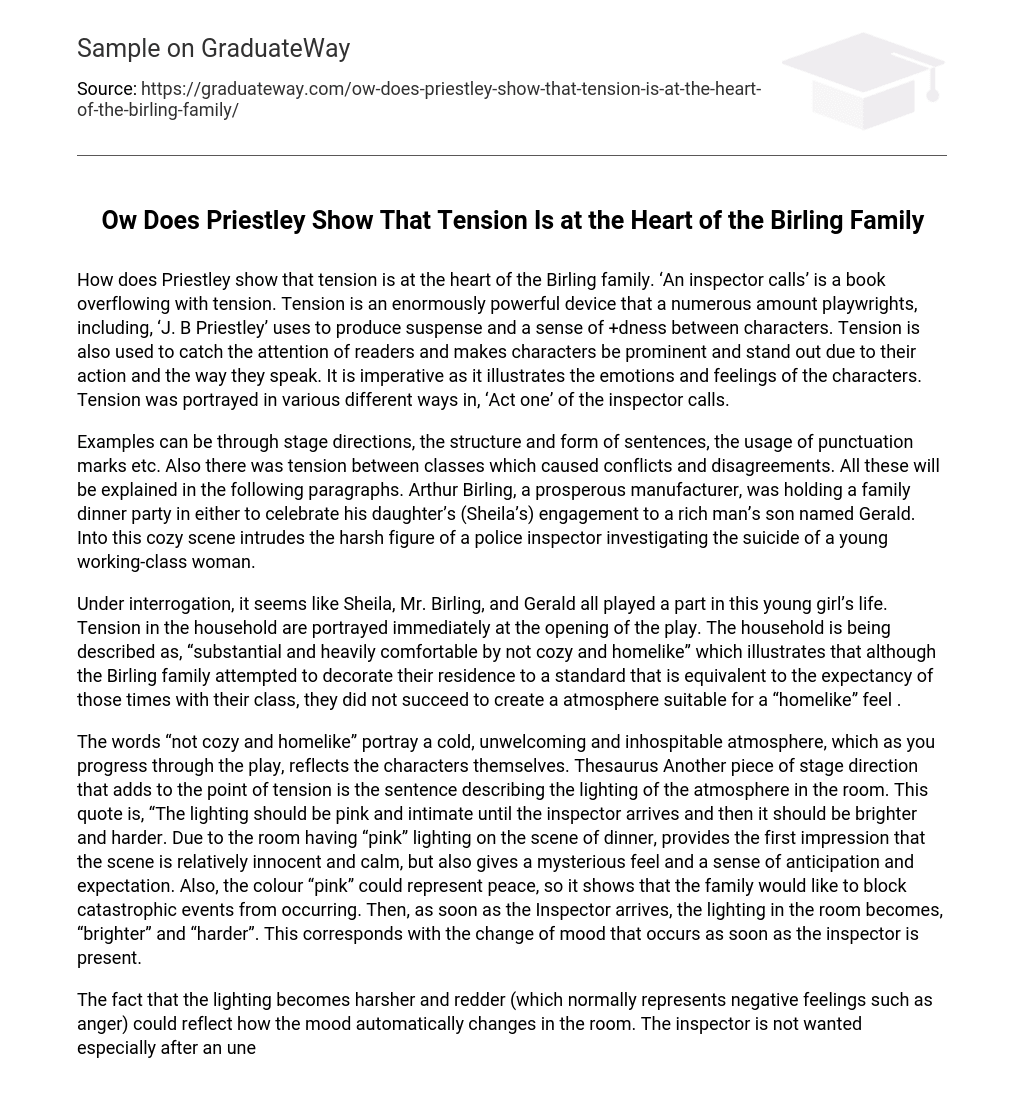How does Priestley show that tension is at the heart of the Birling family. ‘An inspector calls’ is a book overflowing with tension. Tension is an enormously powerful device that a numerous amount playwrights, including, ‘J. B Priestley’ uses to produce suspense and a sense of +dness between characters. Tension is also used to catch the attention of readers and makes characters be prominent and stand out due to their action and the way they speak. It is imperative as it illustrates the emotions and feelings of the characters. Tension was portrayed in various different ways in, ‘Act one’ of the inspector calls.
Examples can be through stage directions, the structure and form of sentences, the usage of punctuation marks etc. Also there was tension between classes which caused conflicts and disagreements. All these will be explained in the following paragraphs. Arthur Birling, a prosperous manufacturer, was holding a family dinner party in either to celebrate his daughter’s (Sheila’s) engagement to a rich man’s son named Gerald. Into this cozy scene intrudes the harsh figure of a police inspector investigating the suicide of a young working-class woman.
Under interrogation, it seems like Sheila, Mr. Birling, and Gerald all played a part in this young girl’s life. Tension in the household are portrayed immediately at the opening of the play. The household is being described as, “substantial and heavily comfortable by not cozy and homelike” which illustrates that although the Birling family attempted to decorate their residence to a standard that is equivalent to the expectancy of those times with their class, they did not succeed to create a atmosphere suitable for a “homelike” feel .
The words “not cozy and homelike” portray a cold, unwelcoming and inhospitable atmosphere, which as you progress through the play, reflects the characters themselves. Thesaurus Another piece of stage direction that adds to the point of tension is the sentence describing the lighting of the atmosphere in the room. This quote is, “The lighting should be pink and intimate until the inspector arrives and then it should be brighter and harder. Due to the room having “pink” lighting on the scene of dinner, provides the first impression that the scene is relatively innocent and calm, but also gives a mysterious feel and a sense of anticipation and expectation. Also, the colour “pink” could represent peace, so it shows that the family would like to block catastrophic events from occurring. Then, as soon as the Inspector arrives, the lighting in the room becomes, “brighter” and “harder”. This corresponds with the change of mood that occurs as soon as the inspector is present.
The fact that the lighting becomes harsher and redder (which normally represents negative feelings such as anger) could reflect how the mood automatically changes in the room. The inspector is not wanted especially after an unexpected arrival. Another point is that when something becomes brighter, it normally causes a person to shut their eyes to avoid the sinister gaze of the light. This may infact represent the sinister gaze of the inspector and how he entered their lives so rapidly.





